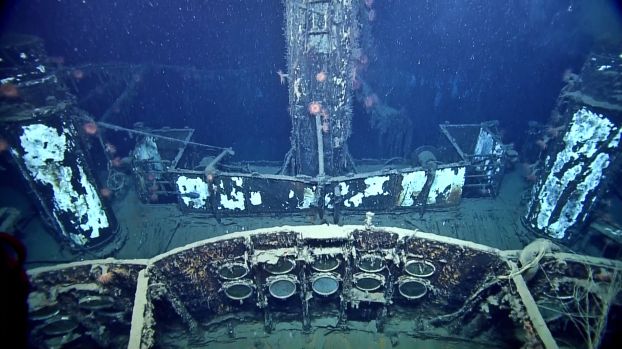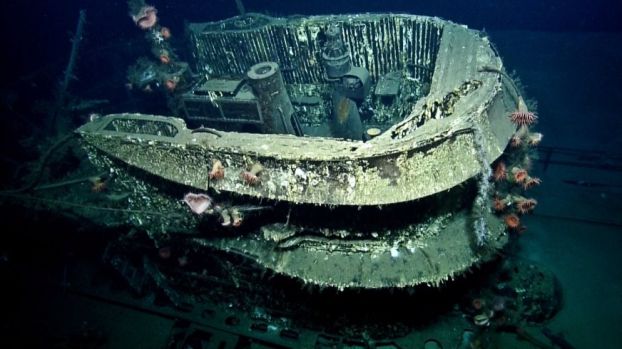In 1942, the German U-boat U-166 quietly stalked the SS Robert E. Lee as she approached the mouth of the Mississippi River. Carrying survivors from sister ships torpedoed in the Gulf, the ship was close to the safety of the river when the U-166 fired a torpedo and hit the ship, sinking her in under 15 minutes. Onboard the SS Robert E. Lee, all but 15 of the 283 passengers and crew on board survived. The wreckage of the steamship sank to the ocean floor, 5,000 feet below.
According to historical accounts, a lookout onboard the SS Robert E. Lee spotted the live torpedo coming and alerted the American submarine chaser USS PC-566, which was escorting the steamer. The PC-566 immediately started dropping depth charges, and the German U-boat was sunk with no survivors, settling just a few miles from the Robert E. Lee. Its wreck is now a war grave, carrying the remains of the 52 crew lost on the submarine.
The remains of the two ships are among the many being discovered by the exploration vessel Nautilus whose official mission is to survey the Gulf for damage from the massive BP Deep Water Horizon oil spill in 2010. Led by a team from Penn State University and manned with scientists from around the world, the Nautilus’ deep sea expedition launched in July and is funded, in part, with BP oil spill reparations. In total, 200 explorers will take part in the 120-day expedition.
Using the latest in undersea technology, scientists control two remote operated submersible vehicles equipped with cameras and sample collection tools to scour the murky bottom. What they see can also be seen by anyone on the internet, with real-time video feeds broadcast live on their website. Over this past weekend, amazing footage of two of the Gulf’s most famous wrecks has also been beamed back. New high definition images of the the SS Robert E. Lee and the German U-boat that sunk it in 1942 have been collected by the crew and also added to their website.
For more information and to follow the Nautilus team live online, visit Nautiluslive.org and see their Facebook page.
Thanks to their live broadcasts, “This is a voyage of discovery everyone can make,” said famed explorer Dr. Robert Ballard in the expedition launch release. In addition to watching the live video feed, visitors can even chat with the explorers in their control room. The page shows which explorers are currently on duty, which underwater vehicles they’re using, and more. Shortly after launching in July, the E/V Nautilus also dove on an sonar unknown target, thought to be a 500 foot-long shipwreck. After a survey of the wreck with ROV Hercules, the Corps of Exploration successfully identified the vessel as USS Peterson (DD-969).
Here’s a video of their discovery:
Visit Nautiluslive.org and see their Facebook page.


